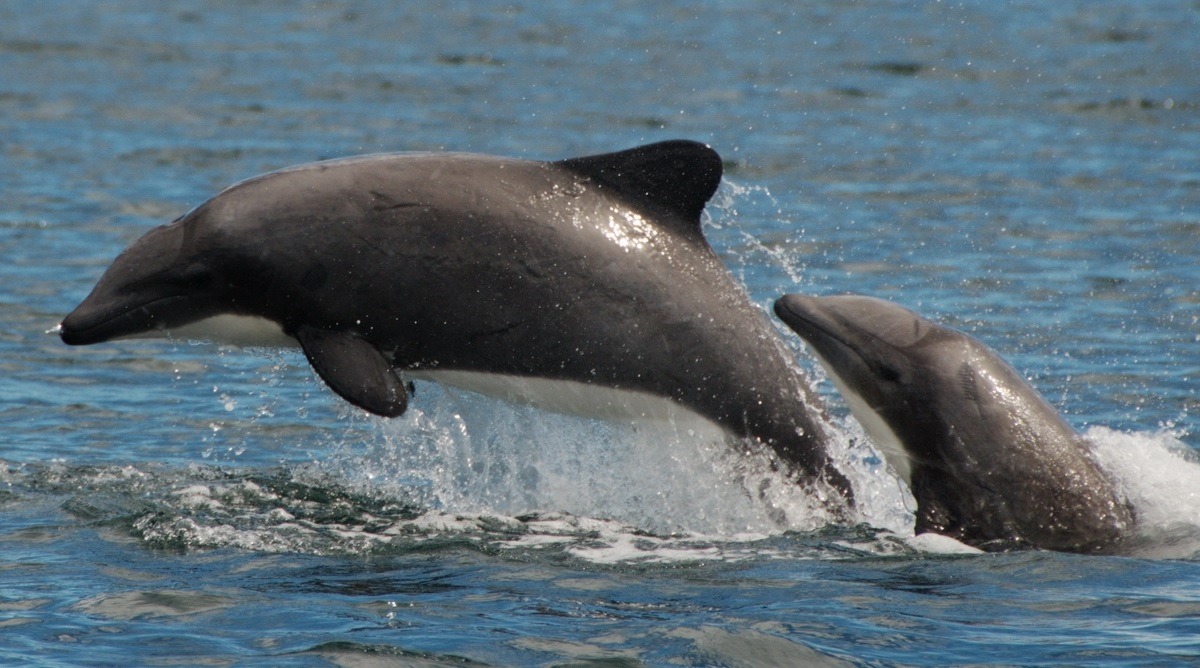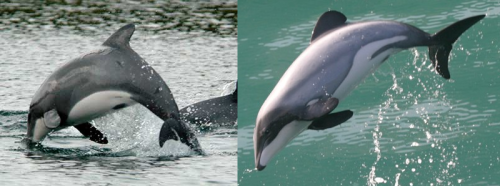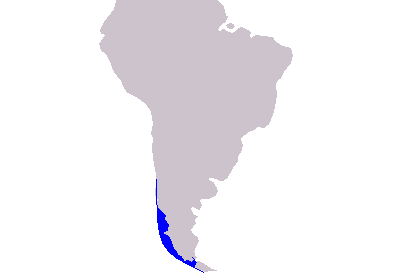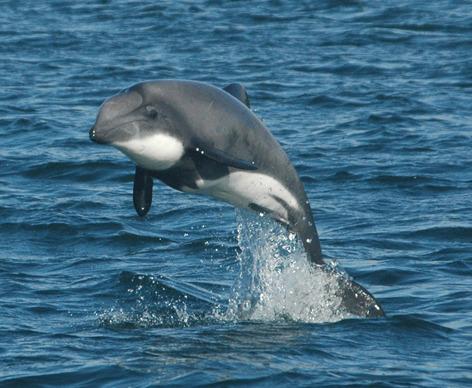
Endangered Cetaceans, part 19
Chilean dolphin, Cephalorhynchus eutropia
Also known as the black dolphin (due to most knowledge of them being from stranded individuals who had begun to decompose, resulting in darker skin), the Chilean dolphin is superficially similar to the Hector’s dolphin in New Zealand, or like a dark Commerson’s dolphin, which it shares some of its range with (and sometimes, Chileans have been found in pods of Commies).
Also together with those other members of the Cephalorhynchus genus, and the soon to be extinct Vaquita, the Chilean dolphin is one of the smallest cetaceans in the world, at only 1.65 meters, and 55-60 kg.

They can be told apart from the Hector’s dolphin through its darker color and less pronounced markings. The Hector’s belly markings resemble those of a killer whale, and while the Chilean can have some of this too, mostly their belly is either pure white or looks pure white from the side, due to the markings being less pronounced.

They are found exclusively off the southern coast of Chile, as far down as Tierra del Fuego.
Since 2008, the species has been listed as near-threatened by the IUCN, while their status previously was simply “data deficient”.

The entire species only numbers in the low thousands, similar to what the Vaquita once had.
The dolphins were hunted for many years, both for human consumption as well as for crab bait, but it seems to have ended now. Around 1992, up to 600 dolphins (including two species, the Chilean and Peale’s) were harpooned per year near the western Strait of Magellan.
Since then, alternative sources of bait (such as offal from the fishing and fish-farming industries) have become more readily available. The killing of dolphins for bait might continue to some extent but there is no reliable recent information on this issue. Although hunting of dolphins is illegal in Chile, enforcement of the law in remote areas is difficult and usually lacking.
And of course, as with all small cetaceans, they are threatened by gillnets, which they swim into and drown in. As with the total population, the bycatch and mortality rate is unknown, as it has not been studied enough.
However, there is a rough estimate from historical data. One port showed that Chilean dolphin made up nearly half of the dolphins killed in gillnets, meaning about 65-70 Chilean dolphins were killed at this one port, every year, and that was over twenty years ago.
Because the species is naturally numerically small, they are very sensitive to any loss in their numbers.
IUCN says that aquaculture (fish and shellfish farms) may also threaten the Chilean dolphin, by destroying their natural habitat where farm densities are higher, as well as the increased boat traffic disturbing them.



